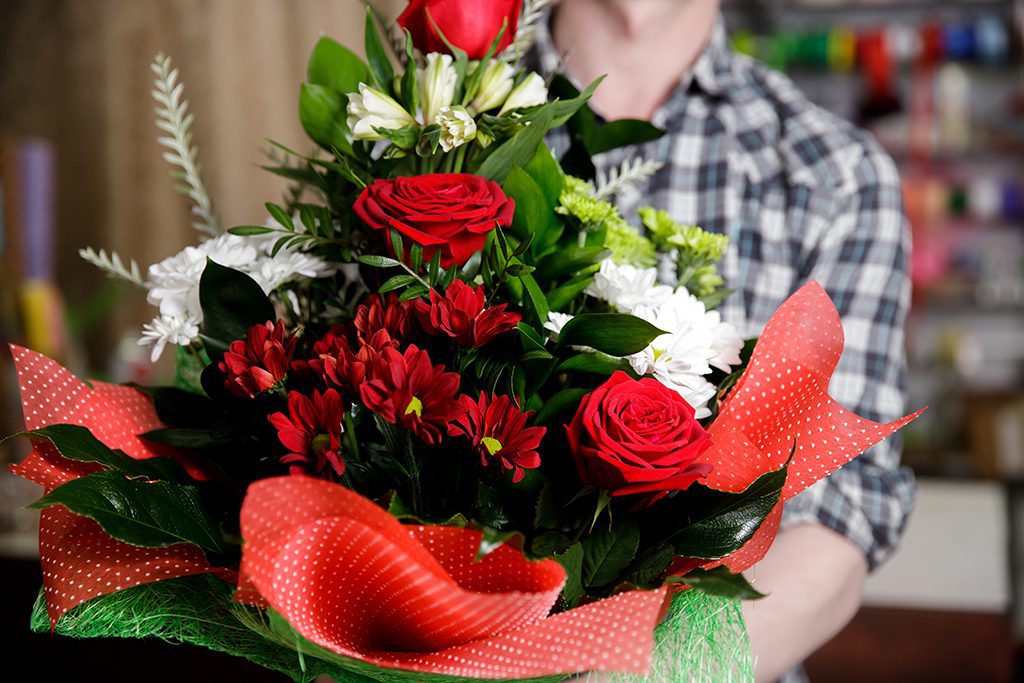
The number of Americans buying flowers for Valentine’s Day increased from 22 percent in 2022 to 34 percent this year.
American consumers under pressure from inflation still sought out flowers and plants for Valentine’s Day gifts — and in a big way.
The number of Americans buying flowers for Valentine’s Day increased from 22 percent in 2022 to 34 percent this year, marking the strongest Valentine’s Day for flower sales in at least the past 10 years, according to a poll of consumers by IPSOS conducted on behalf of the Society of American Florists.
And there’s more good news: more than half of flower purchasers said they’d buy more flowers within six months — mostly as gifts for others. About 21 percent reported that they’d seek out a florist for those flower purchases.
“It seems like people still valued flowers,” said Charlie Hall, Ph.D., the Ellison Chair of Floriculture at Texas A&M University and the Society of American Florists’ Chief Economist, after reviewing the data. “There were other gift purchases, but they still valued flowers.”
The survey was conducted online Feb. 15 from a sample of 1,005 adults age 18 and older from the U.S.
10-Year High
This year’s results, which show that flowers and plant purchases increased over last year by 54 percent — represent the most flower and plant purchases in the 10-year history of the survey (see chart).
The results come after many florists reported mixed results from their December sales, with many wondering if consumers’ COVID-19 era love affair with flowers and plants had ended. While one set of data may not be enough to gauge consumer sentiment, Hall says, it indicates they haven’t forgotten the benefits of flowers and plants.
“For cut flowers, it sure seemed like people have heard the message,” he says.
 Affordability Top of Mind
Affordability Top of Mind
Affordability topped the list of factors that influenced flower buying decisions for 48 percent of respondents (up from 43 percent in 2022), but even so, Americans seeking flowers and plants for gifts spent more this year than in the past two years. On average, purchasers spent $58.40 in 2023, up from $55 in 2022.
About 54 percent of purchasers spent less than $50 on flowers. The most popular price point was between $21 and $40.
Hall attributes the increase in spending to consumers’ unspent government COVID-19 relief money combined with rising wages.
“People have money,” Hall says. “People are still drawing down from excess savings.”
The need to connect with friends and loved ones was the second most compelling reason to buy flowers for 47 percent of respondents, and convenience was the third most important factor for 44 percent.
 Who Bought for Whom?
Who Bought for Whom?
The most common subgroups who purchased flowers for Valentine’s Day were similar to past years: those who are married (37 percent, up from 26 percent in 2022); children in the household (48 percent, up from 38 percent in 2022); men (47 percent, up from 28 percent in 2022); adults ages 18-34 (50 percent, up from 33 percent in 2022) and full-time employees (44 percent, up from 29 percent in 2022).
The most popular recipient of Valentine’s Day flowers were spouses, accounting for 48 percent of recipients, down from 54 percent in 2022. Other recipients were mothers (26 percent, up from 24 percent in 2022), children (15 percent, up from 13 percent in 2022) and themselves (13 percent, the same as 2022).
Flower of Choice
Red roses reigned supreme, gaining more popularity this year than previous years. About 85 percent of respondents purchased roses, and 74 percent purchased red roses, compared to 65 percent in 2022. Pink and white roses were the next most popular choices. About 36 percent of respondents bought a bouquet of mixed flowers, the same as in 2022. About 21 percent purchased a plant as a gift, down from 27 percent in 2022.
Grocery Stores Top Outlet
The most popular outlet for flower purchases was the grocery store, with two in five buyers (43 percent, up from 40 percent in 2022) making their purchases there. One in four flower buyers (25 percent, about the same as in 2022) turned to their local florist for their purchases.
Other frequented outlets included:
- Mass merchandisers with 32 percent of purchases, about the same as in 2022
- Internet floral services with 13 percent, down from 14 percent in 2022
- Independent garden center, greenhouse or nursery with 12 percent, about the same as in 2022
- Home improvement centers with 8 percent, down from 11 percent in 2022
*total percentage exceeds 100 percent because of purchases from more than one outlet
Future Flower Purchases
When considering future purchases for others this year, flower shops and grocery stores stand to gain more business, based on the survey: 21 percent of respondents said they’d purchase from a local florist, up from 18 percent last year, and 34 percent would purchase from grocery stores, up from 29 percent last year.
- 23 percent would purchase from a mass merchandiser (Walmart, Target, etc.), down from 24 percent last year
- 10 percent would purchase from an internet floral service, down from 12 percent last year
- 7 percent would purchase from an independent garden center, greenhouse or nursery, down from 8 percent last year
- 5 percent would purchase from a home improvement center, down from 7 percent last year
Amanda Jedlinsky is the managing editor of SAF NOW.
